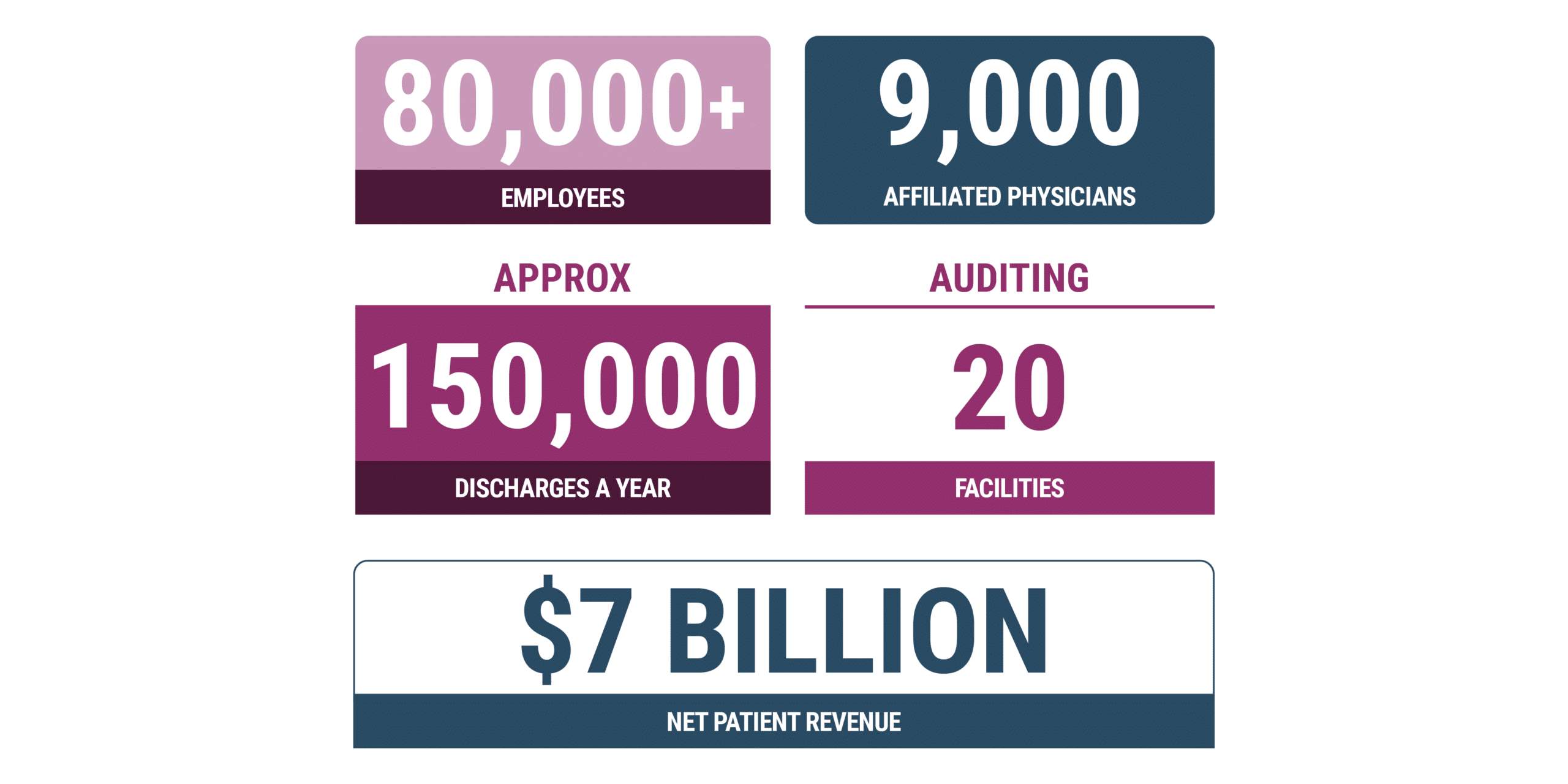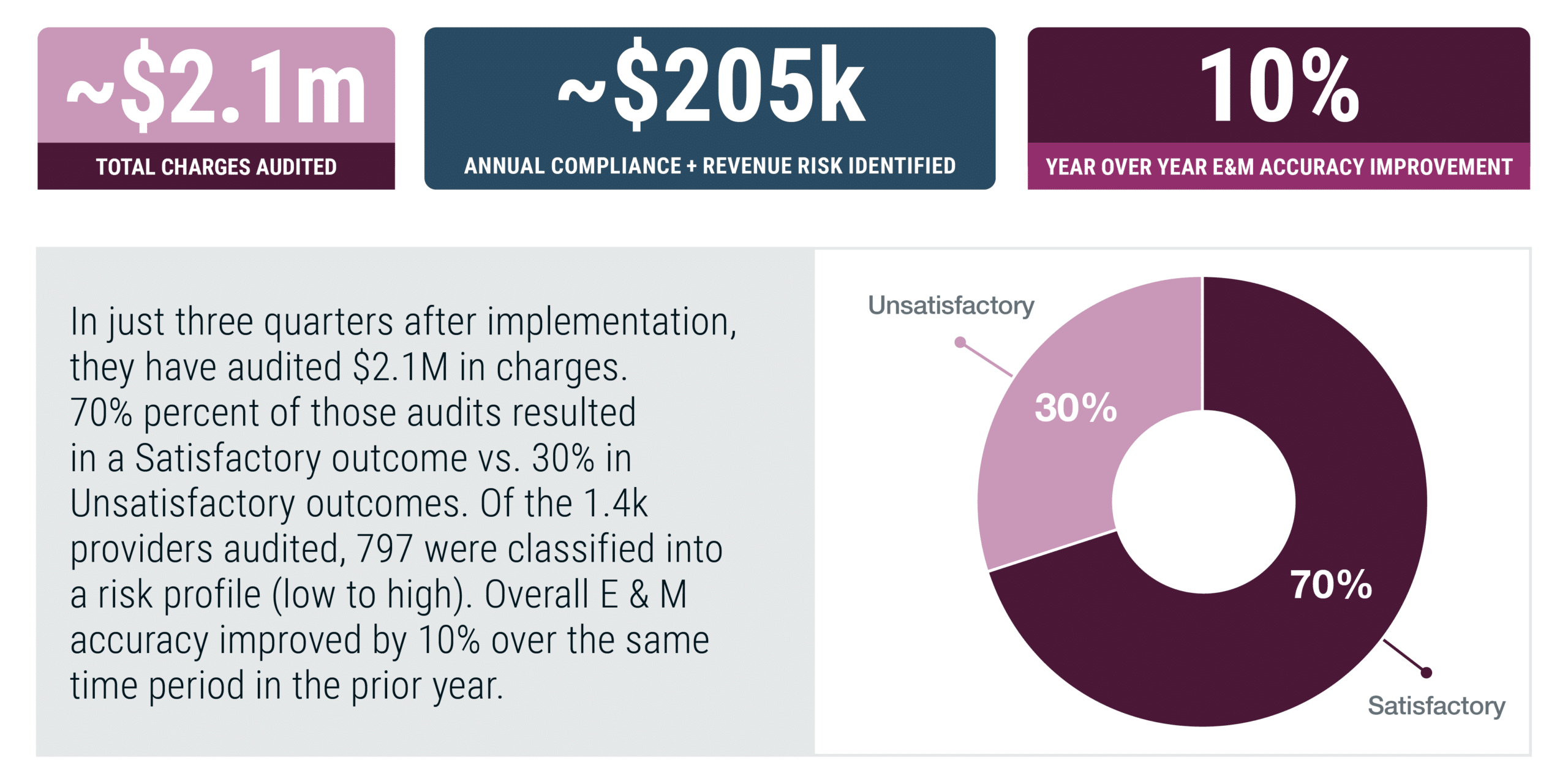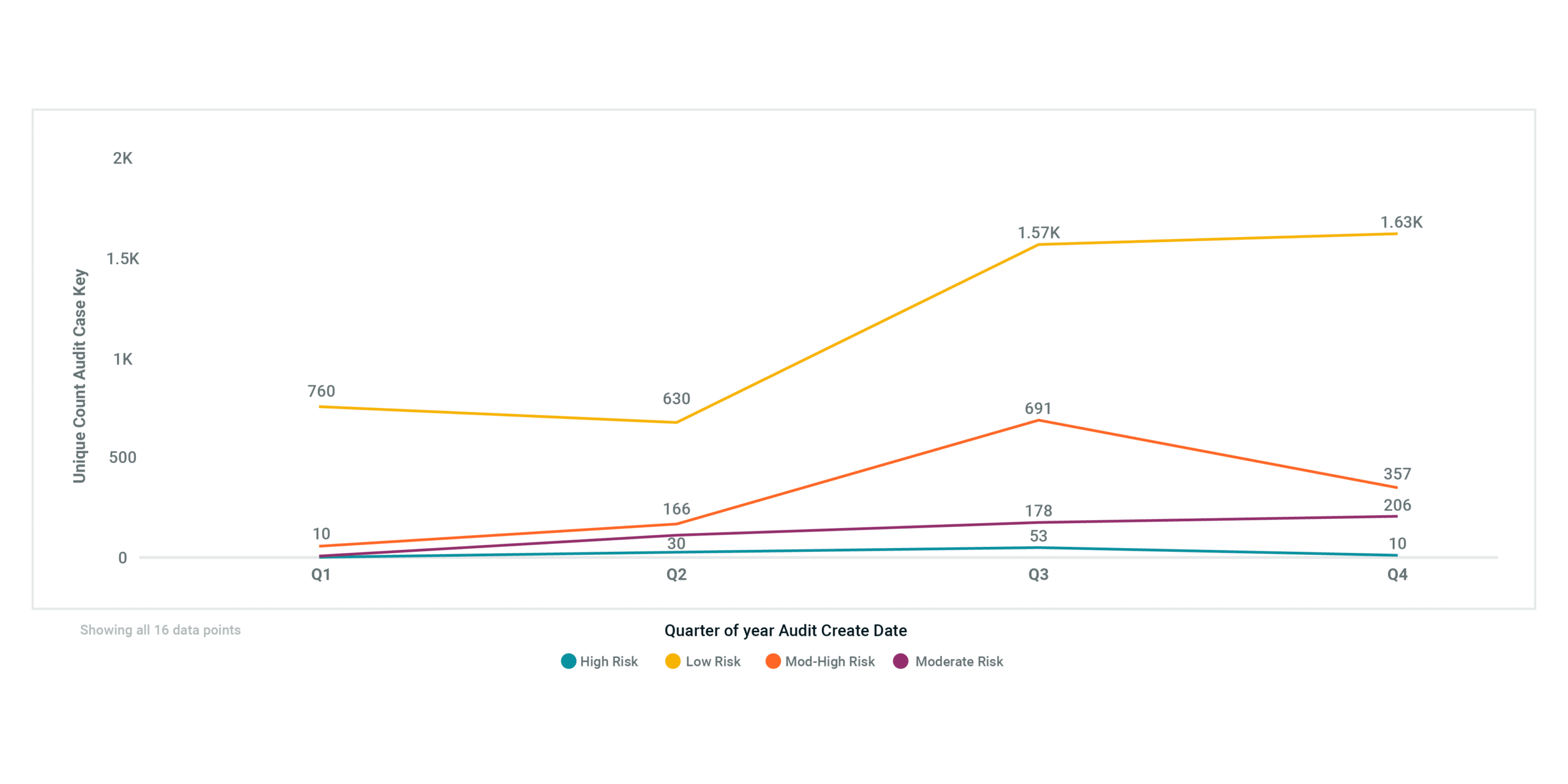THE CUSTOMER PROFILE
This large, East Coast-based non-profit hospital and physician network includes two of the nation’s most prestigious teaching institutions and is one of the nation’s leading biomedical research organizations. It employs over 80,000 people across 20 facilities, with 9,000 affiliated physicians discharging approximately 150,000 patients annually with net patient revenue of $7B.

THE CHALLENGE
A large billing organization seeking consistent program alignment requires streamlined technology.
Two of the system’s large physician organizations merged to form one professional billing organization, creating the opportunity to design a new billing and compliance program. “With that change, the biggest obstacle we had was different systems,” says the Billing Compliance Director.
Recognizing that such an undertaking would require a platform that could scale to support the entire organization, she and her team turned to MDaudit. “We decided that in order for us to be successful, and in order for us to adequately represent and understand our full book of business, we absolutely had to transition to the same system.”
Before the merge, one system used MDaudit Professional for many years, and the other had a different, shorter-term auditing system. They both used separate systems for auditing and data analytics, relying heavily on their EHR, which caused challenges and inefficiencies for their compliance departments. The two reached a consensus to transition the combined billing organization to MDaudit, allowing the newly consolidated team to streamline analytics and audit workflows into one platform.
We decided that in order for us to be successful, and in order for us to adequately represent and understand our full book of business, we absolutely had to transition to the same system.
The scope of the work that we have to do mandates that we have the best system that we can, and MDaudit certainly is proving to be that. It has been huge for us.
THE SOLUTION
MDaudit allows the team to work seamlessly, increasing transparency and efficiencies as an integrated compliance department.
The key to successful implementation was change management through an integrated training and communications strategy that began during the sales process. Giving primary and secondary stakeholders visibility into the decision-making process and allowing them to see how MDaudit would benefit each of their roles encouraged buy-in from the start. From compliance auditors who would work in the platform daily to the C-suite executives who depend on accurate reporting to manage the healthcare system’s bottom line, stakeholders recognized potential efficiencies, cost savings, and operational standardizations.
In managing her team through the change, the billing compliance director committed to them that she would ensure they would know everything there is to know about the system they would be using. “We thought long and hard about that training and designed a program that we knew would get everyone up to where they needed to be from a knowledge perspective,” she said.
She also set the expectation that the system would evolve as the team began to adopt and adapt it to their own needs and that she would continue to communicate with them as changes were made. She credits the MDaudit team with helping to maintain that consistent communication.
Together, the MDaudit implementation team and the organization’s teams developed a customized approach to training. The process was divided into two distinct stages: a conversion from MDaudit Professional to MDaudit Enterprise for both, and then a new implementation for the entire organization. Lessons learned from stage one helped to smooth the path forward for the second stage. Weekly user workgroup meetings were convened based on user roles and workflows. Each member’s scope of work, specialty, and experience in system implementations were considered when composing user groups – designed to push the limits of the status quo and encourage hands-on involvement across the team in developing and implementing new processes.
Like any organization, this one is resource-limited. Though a combined team of 14 auditors may seem robust, the scope and size of the compliance workload requires a system focused on maximum efficiency today and in the future. MDaudit delivers on that need with automated workflows, continuous risk monitoring, and anomaly detection that allow users to quickly identify risks, determine the root cause of errors and apply corrective action. “With the new team structure operating from one platform, we expect to be better prepared to withstand constraints we might experience in the coming years,” notes the compliance director.
The streamlined functionality of MDaudit has supported cultural shifts for the combined organizations’ compliance office. “Our teams are now working the same way, in the same system. That helps them feel like they’re part of one team,” she reports. Each auditor now specializes as a subject matter expert across the facilities, a more optimal organizational structure that could not exist without the efficiencies of the platform.
MDaudit’s robust audit reporting with advanced analytics dashboards provides real-time insights and allows the team to visualize their upcoming work queue. “Our auditors know for certain that the system is going to support the work that they’re doing. And I think that has absolutely helped shift the culture for our teams,” said the director.
It is impossible for an organization of this size to audit every physician, but with MDaudit’s Billing Risks, the organization developed a hybrid model that maintains routine needs, such as auditing new providers, allowing the team to identify and focus on the at-risk providers and facilities. “The scope of the work that we have to do mandates that we have the best system that we can,” she explained, “and MDaudit certainly is proving to be that. It has been huge for us.”
TIPS FOR SUCCESSFUL IMPLEMENTATION
- Involve C-Suite and other stakeholders early in the process to cultivate champions throughout the organization.
- After each training session, put it into action by adapting what you are learning into existing operational procedures.
- Hold weekly user meetings to clarify workflows throughout the transition.
- Recruit those with concerns into the process of designing solutions.
- When faced with organizational roadblocks, be prepared to remind teams of the investment that has already been made and the value that will be gained.
THE RESULTS
MITIGATING RISKS ASSOCIATED WITH PROVIDER AUDITS
The below graph shows the rate of decrease in “High Risk” and “Mod-High Risk” cases associated with the risky providers identified in unsatisfactory audits between Q3 and Q4 of 2021.
- “High Risk” cases identified with an unsatisfactory provider audit decreased from 53 to 10
- “Moderate-High Risk” cases identified with an unsatisfactory provider audit decreased from 691 to 357
To download the full case study PDF, click here.








